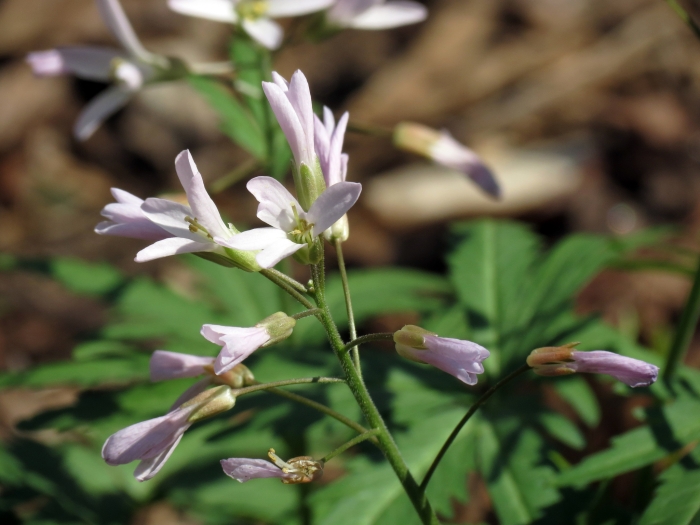Cutleaf Toothwort
(Cardamine concatenata)
Cutleaf Toothwort (Cardamine concatenata)
/
/

Katja Schulz
CC BY 4.0


















































Estimated Native Range
Summary
This species is valued for its early spring blooms and is often used in woodland gardens, native plant gardens, and shaded border areas. It is a low-maintenance plant that provides early nectar for pollinators. Cutleaf Toothwort prefers part shade but can tolerate deeper shade, and it thrives in humus-rich, well-drained soils with consistent moisture. While it is not commonly used in culinary applications, the roots can be processed as a horseradish substitute. Gardeners should be aware that this plant can be susceptible to leaf spot diseases and should ensure good air circulation to prevent such issues. It is not known for being invasive and does not have aggressive roots, making it a safe choice for most garden settings.CC BY-SA 4.0
Plant Description
- Plant Type: Herb
- Height: 0.5-0.8 feet
- Width: 0.5-0.8 feet
- Growth Rate: Slow
- Flower Color: White, Pink, Purple
- Flowering Season: Spring
- Leaf Retention: Deciduous
Growth Requirements
- Sun: Part Shade
- Water: Medium
- Drainage: Medium, Slow
Common Uses
Bank Stabilization, Bee Garden, Border Plant, Butterfly Garden, Low Maintenance, Rock Garden
Natural Habitat
native to rich, deciduous forests and floodplain woodlands in the Central and Eastern United States and Canada
Other Names
Common Names: Crow’s Toes, Pepper Root, Purple-Flowered Toothwort, Cut-Leaved Toothwort, Five-Part Toothwort, Slender Toothwort, Cardamine Découpée, Dentaire Laciniée
Scientific Names: , Dentaria laciniata, Cardamine concatenata, Cardamine laciniata, Dentaria concatenata, Dentaria laciniata var. coalescens, Dentaria laciniata var. integra, Cardamine laciniata f. minor, Cardamine laciniata var. integra, Dentaria concatenata var. coalescens
GBIF Accepted Name: Cardamine concatenata (Michx.) O.Schwarz